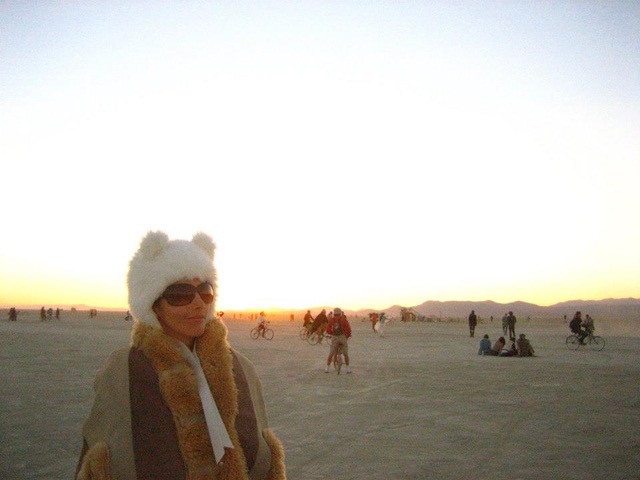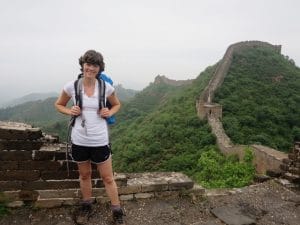A Life and Patient Journey – Q&A with Life Coach, Julie Singer (Part 3)
From the age of 14, Julie spent over two decades living with the intense reality that comes with Crohn’s disease. Now living with a permanent ileostomy, she has found a new perspective on life that she is passing on to others through her volunteer work with organizations such as the United Ostomy Association of Vancouver, and through her personal coaching practice, Inside Wellness.
In the third and final segment of our Q&A with Julie, our cofounder, Kirk Robinson delves into her impressive comeback after surgery and being hospitalized for several weeks. Julie shares her pathway towards recovery, how she came to terms with her new reality of living with an ostomy, and her advice she has for others who are in the midst of a similar battle.
(Read Part 1 and/or Part 2 of Julie’s story)
—
Julie Singer’s Journey with Crohn’s Disease (Present Reflections) | Part Three
Kirk: Julie, fast forward from teen years to adulthood. You’re living with a serious chronic condition and you’re taken to the edge in 2011. Looking at you today you’re somewhere in between like 115 – 120 lbs but you say you went down 85lbs. So that’s 30lbs off your already lean frame. That is intense.
Julie: Yep.
Kirk: Yet you stand here before me and I would never guess you have Crohn’s. Just five years later your are a successful medical representative and you’ve got your own consultancy as a life coach. That’s a huge turnaround in under a decade.
Julie: Thank you! Yes, it is crazy that was only five years ago! (laughs)
Kirk: You were staring death in the face, so explain how you turned all this around?
Julie: It wasn’t easy when I was in the hospital my incision wound opened up after surgery. I ended up spending close to 6 weeks at St. Paul’s Hospital. I was forced to do a lot of soul-searching. Lots of inner forgiveness work. It was rough times. I actually went back into surgery to get the incision wound sewn up again. It was a two inch open wound, half an inch deep gaping hole in my abdomen for 6 weeks. It finally healed up when I was at Burning Man at the end of August. My original surgery was in May. I had nurses coming in for month after surgery to take care of it and pack it with gauze.
Kirk: Why wouldn’t it heal?

Julie: I think it was actually the whole emotional component. There were emotions such as anger that I needed to express. Once I was able to release some of the pent up emotional energy then I could set clearer boundaries for myself. I needed to be responsible for my own healing journey, once I realized that then things began to shift. I went to the desert, to Burning Man, with my dad, brother and a group of great friends. One of my friends also happened to be a community nurse who was able to do dressing changes for me. It was at Burning Man that my abdominal wound finally closed off completely.
Kirk: When did you come to grips with your new reality?
Julie: I had lots of time (and a willingness) to process the fear that would come in waves. The interesting thing is that when you sit with fear long enough it eventually transforms into bravery. I realized that I was going to be ok no matter what! I had lots of time to think about what I was willing to share with people? Did I want to be open about the fact I have an ostomy? Was I gonna keep this private? If I am telling people, do I just tell my close friends and family? I kept playing all these scenarios over in my head and then eventually I realized that I have some influence on how other people are going to perceive this. I am the creator of my new reality! If I am feeling shameful or scared to tell people, other people are going to receive me and the ostomy that way. If I just own it and focus on being successful, empowered and the best version of me, then maybe that is the solution! By helping myself, I can support others along the way.
My life is so much better because of surgery. I’m not in pain anymore. I’m not attached to a toilet. Physically I had to get over the fact that I don’t have a completely flat stomach. I’ve got this pouch on my stomach, but life is so much more than just what you look like in the mirror right? It’s being able to have an amazing quality of life. I want people in my life who are able to look past that surface stuff. I wanted quality not just surface, so I saw it also as an opportunity to weed out people who weren’t willing to embrace me. Like all of me.
Kirk: What advice do you have for people with Crohn’s right now? And their pathway towards better health? If they’re dealing with newly diagnosed?
Julie: Often as soon as something is painful or uncomfortable we resist it or turn away from it. From experience, I found even when I was in a lot of pain, learning to like embrace it and not being afraid of the pain and being willing to dive into it in a non-judgemental way was really transformative and powerful for me. Learn to love yourself through difficult times. I think that often we can be so hard on ourselves and judge ourselves for being sick.
Kirk: Was there a lot of negative self talk that you endured during this time?
Julie: Definitely. I wasn’t even aware of it for many years. I would say for most people that little voice inside our heads can be quite critical of everything and it may have more of an effect on our health, most definitely our mental and emotional health, than we realize! Instead, ask yourself, how can you be your biggest ally rather than your sharpest critic?
Kirk: So you had permanent ileostomy for over 6 years ago now. You’ve been through the trenches and a lot of trial and error selecting the right product in ostomy supplies. What are your go-to’s today for products?
Julie: There was definitely some trial and error with different pouch systems in terms of having skin issues, etc. And right after surgery even in the hospital dealing with leaks every 24 hrs. I remember feeling like, oh my god is this my reality now? So if anyone is going through that, don’t give up there’s lots of different options that they won’t offer you in the hospital.
Through trial and error, I realized that I had to move to a convex baseplate and I moved to a GP system and I know tried one product and I was getting terrible itching at the beginning so I had to switch to another company. Now I feel like know what works. It’s been great been using Inner Good and just being able to make a phone call and talk to someone and get some guidance in terms of claiming it through third party medical insurance and then having it arrive at my doorstep within a day, … yeah it’s been so much better this way! I’ve tried different belts and accessories. I use Coloplast’s SenSura Mio 2-Piece Click Drainable Pouch (MAXI) and SenSura Mio Convex Click Barrier.
Julie: For me I wanted a smaller pouch so I felt comfortable in my day-to-day life. Originally I think I actually found something that was more for kids. The thing I like about the Mio is that it’s discreet. You can actually fold it up.
Kirk: Last question, for us at Inner Good, our mission is to help people find their better, faster. For individuals newly out of surgery, what do you recommend to them about getting into the right product?
Julie: I think it’s important to do proper assessment of all the your health issues. There can be skin issues and leakage issues. Don’t suffer and believe that you have to “just deal” with minimal wear time. Don’t wait around, talk to an ET nurse or someone who has seen it all who can help provide a way forward. There is a solution out there so don’t give up and don’t think that you just have to just grin and bear it, especially if it’s irritating your skin. Try something else. Deal with it now!
Kirk: Did you ever talk to anybody? Like who’s like a peer who’s going through the same thing at the time?
Julie: Yes, I did speak with a volunteer from the UOA before surgery and she was an IronMan participant. I remember thinking ok, if this person can do an IronMan event with an ostomy, then there really shouldn’t be anything I can’t do! It showed me that you can do anything after having surgery, there are no limits, so that was really helpful!

I was also grateful to have met Rob Hill. One year after surgery, he organized a tour for a bunch of us on the great wall of China through IBD adventures. Rob provided all sorts of great advice on product. For instance, he would say that sometimes people are just sensitive to the different tapes whether it comes from Hollister, Coloplast or ConvaTec – change quickly from the one you are using if it’s irritating you. Besides great advice, Rob was an inspiration to be around. He has climbed Everest with an ostomy, along with the 7 highest peaks on each continent.
Having peer-to-peer interactions like these had a major impact on my health, wellness and lifestyle. It also energized me as I was completing my life coach training at CTI – Coaches Training Institute right around this time. Looking back, the healing process was more than just physical, … it’s was a mental, emotional, and a relational process. All these things were pivotal for my recovery and acted as a driver for me to help others dealing with IBD and Crohn’s.
Kirk: You are a very inspirational person.
Julie: Thank you!
—
To learn more about Julie and her Coaching practice, checkout Inside Wellness. If you are interested in sharing your journey with others, send us a message on our contact us page.


